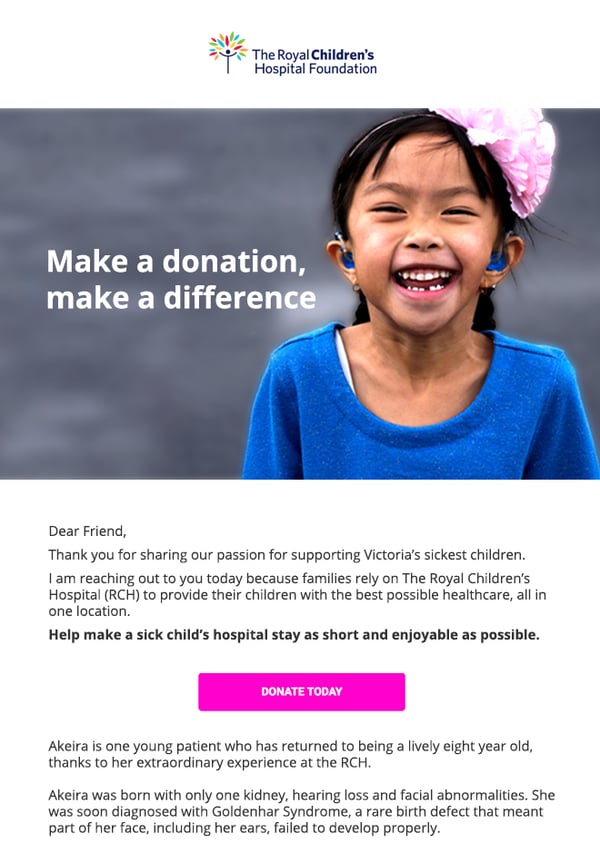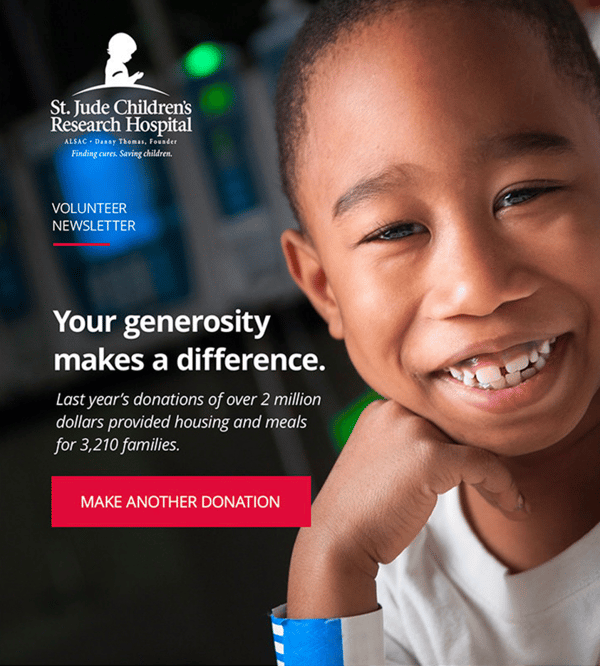When thinking about how to improve their email marketing engagement, nonprofit marketers look at their email metrics. They analyze a wide range of data to determine opportunities for improvement.
This is a proven strategy. After all, analytics is—and will always be—crucial to nonprofit email marketing and email marketing as a whole.
That being said, marketing is often about thinking outside the box. As a nonprofit marketer, you should always seize your opportunity to use new ideas and techniques. And improving email marketing engagement is no exception.
In addition to analytics, there are other ways for you to improve your email marketing metrics.
Enter nonprofit email marketing benchmarks.
In this article, we’ll introduce you to nonprofit email marketing benchmarks for 2024 and explain how you can use this data to increase your email marketing engagement.
Nonprofit email marketing benchmarks
Every year, email marketing platforms release an email marketing benchmarks guide, which compiles billions of emails sent through their platform. They then analyze the data and publish the results in comprehensive reports.
Nearly every industry has its own benchmarks—one of which is the nonprofit industry. We've summarized
This is the percentage (out of the total number) of subscribers who opened your email.
-
-
Average email click-through rate (CTR)
The percentage of subscribers who clicked on a link within your email out of all the emails you sent.
According to a NeonOne report, the average email CTR for nonprofits is 3.29%.
-
Average email click-to-open
The percentage of subscribers who opened an email and then proceeded to click on a link within that email.
The average click-to-open rate for nonprofits is 12.99%.
-
Average email unsubscribe rate
This is the percentage of subscribers who opt out of receiving any more emails.
The average unsubscribe rate for nonprofits is just 0.17%.
Increase your nonprofit email engagement
Now that you’re up-to-date on current email marketing benchmarks, what can be done to improve email engagement for your nonprofit?
According to email marketing benchmarks, nonprofits have the highest open rate out of all other industries. However, this doesn’t mean that you no longer have room for improvement.
Here are some tips on how you can use to further increase your open rate.
Try new copywriting techniques in your subject lines. If you are trying to appeal to your subscribers’ generosity for a cause that needs immediate action, your subject line can be something like “John, there is an urgent need for blood. Will you help us?”.

Source: Campaign Monitor
- Always personalize your emails by including your subscribers’ first names.
- Optimize your preheader to effectively summarize the content of your email.
The CTR of nonprofits is on par with the benchmark for all industries, which sits at 2.69%. Ways to improve your CTR include:
- CTR involves your CTA, so it only makes sense to optimize this element of your email. You can improve your CTA by creating a better CTA design. Use contrasting colors and bold text so that the CTA contrasts (and therefore becomes much more visible) with the rest of the email.

Source: Campaign Monitor
- Create stronger segments so that you can send the most relevant content possible to each of your subscriber segments. One way to achieve this is to send a survey email to your subscribers regarding their email preferences. You can ask subscribers what type of emails they’d like to receive from you, what day they would like to receive emails (weekday vs weekend), and how often they’d like to receive these emails (daily, weekly, bi-weekly, etc.)
- To avoid creating any confusion for your subscribers, be sure to maintain the same branding and tone of voice throughout all of your emails.
A high click-to-open rate is a strong indication that your email campaign was a success. Since it’s measured using only subscribers who opened your email, you can determine how many of your subscribers acted because of your email content.
Here are a few ways to increase your click-to-open rate:
- Design your emails to render perfectly on both desktop and mobile devices. This makes it easy for subscribers to click on the links and CTAs no matter what device they’re using.
- Optimize your copy and design so that your emails inspire subscribers to take your desired action, whether it’s to make a donation, volunteer, or attend a fundraising event.
- Automate your emails to ensure that subscribers receive your messages at the perfect time.
With an unsubscribe rate of just 0.17%, it’s safe to say that nonprofits don’t experience a significant amount of unsubscribes. Here’s what you can do to keep your unsubscribe rate at a similar (or even lower) rate:
- Maintain email list health from the start. Keep in mind that it’s better to have a smaller list of engaged subscribers than a huge list of inactive subscribers.
- Use the confirmed opt-in. This way, you can verify subscribers’ email addresses and ensure that they are legitimately interested in joining your list.
- You can attempt to re-engage inactive subscribers, but don’t spend too much time doing so. If they don’t respond to re-engagement methods, don’t hesitate to remove them from your list.
Wrap up
Analyzing analytics is crucial for enhancing your nonprofit's email marketing strategy. By delving into these metrics, you can uncover insights to boost your engagement levels and propel your email marketing efforts forward.
By familiarizing yourself with the latest email benchmarks, you can gauge how your emails measure up against industry standards. This knowledge allows you to fine-tune your email marketing tactics and elevate your engagement metrics effectively.